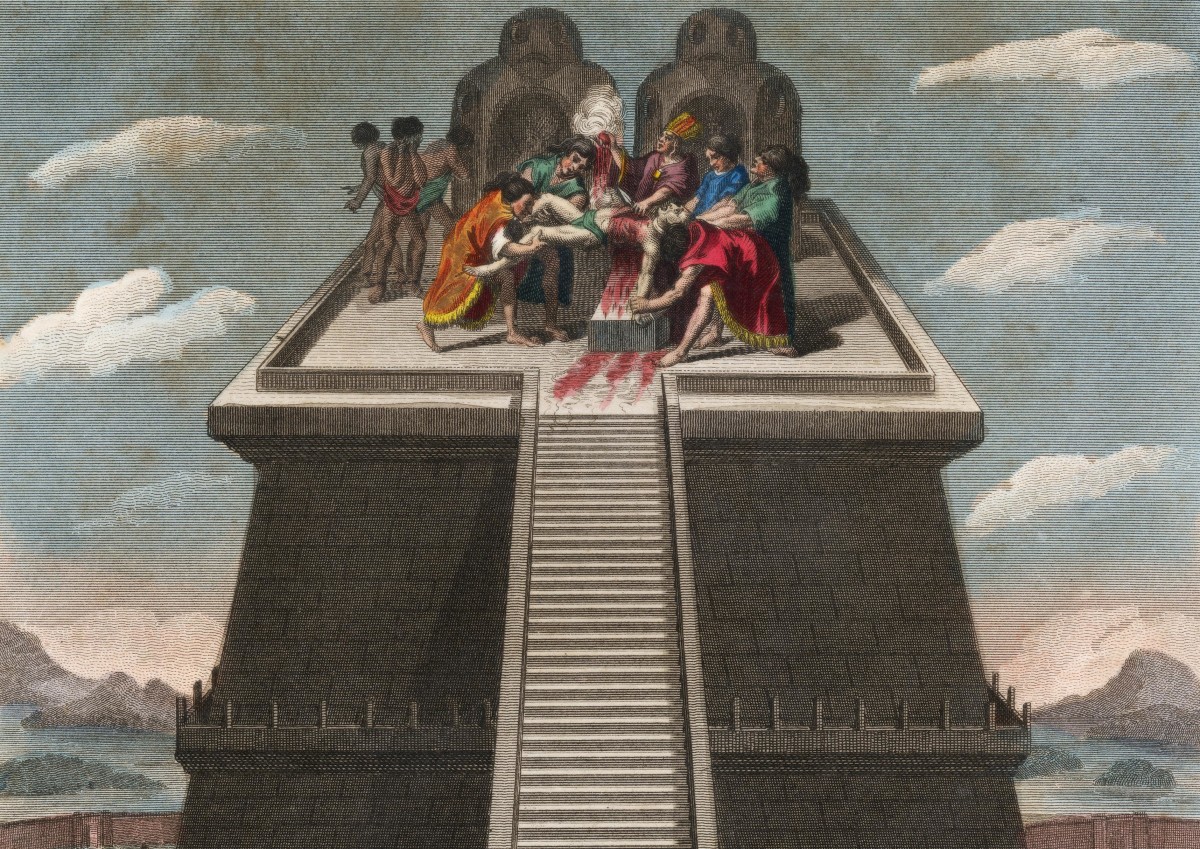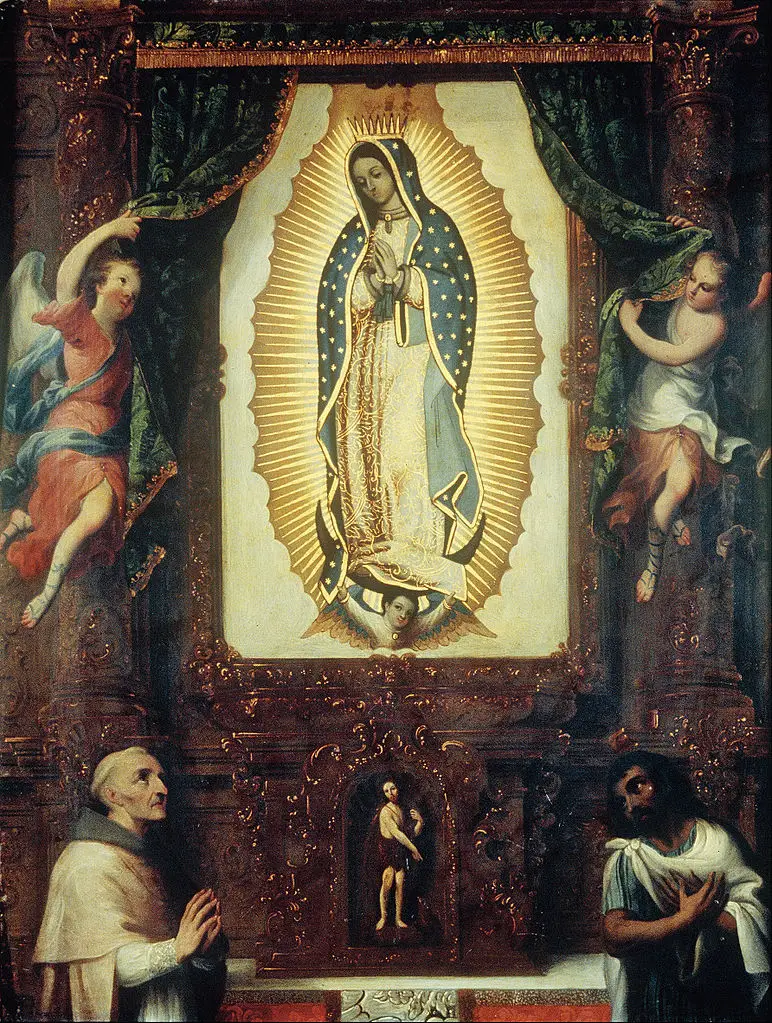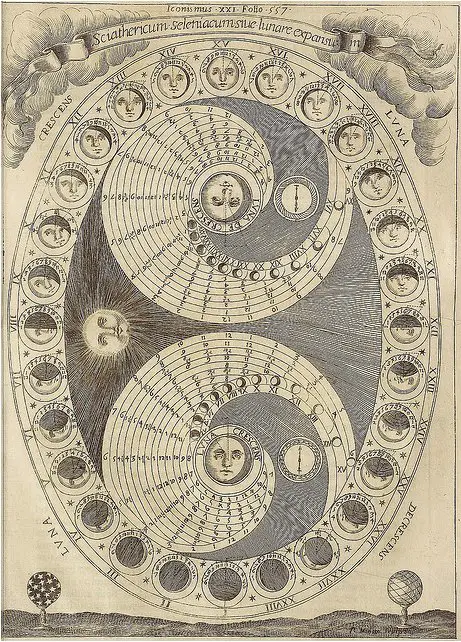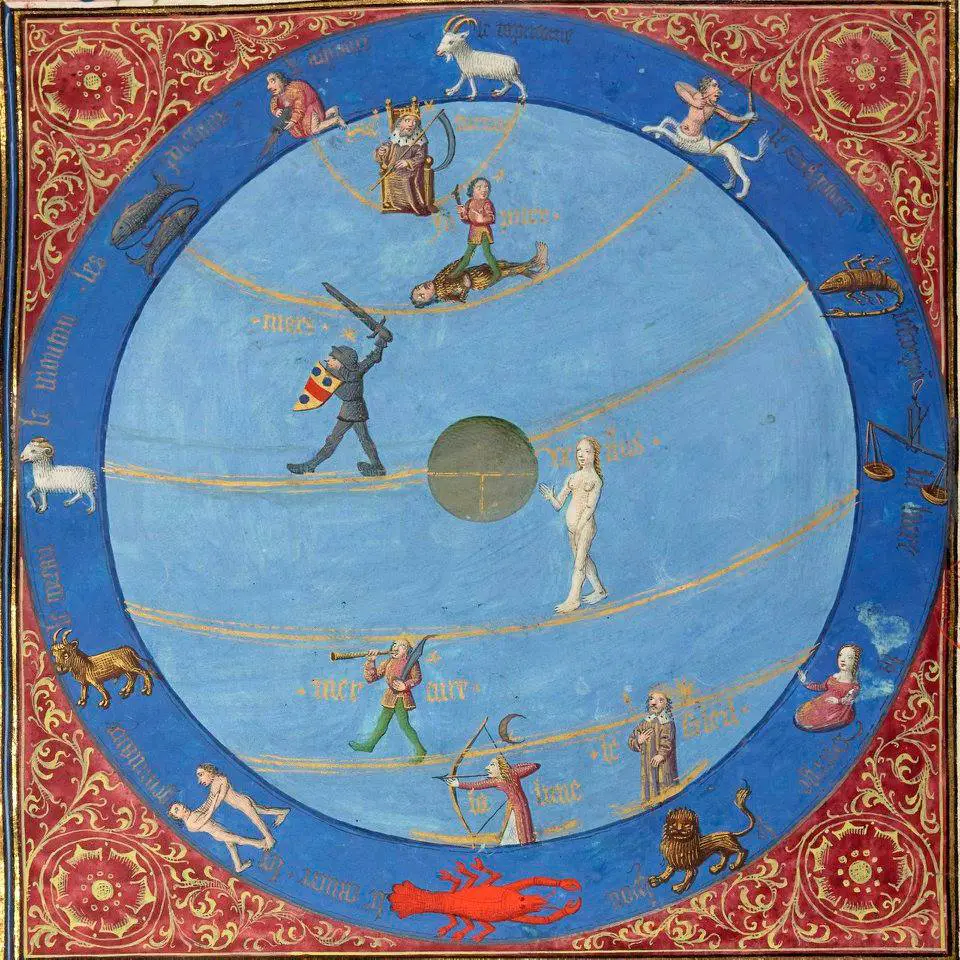Tag: Aztecs
The Virgin of Guadalupe, the Feathered Serpent and the "hidden river" of history
On the day of the winter solstice of 1531, at thehe hill of Tepeyac, sacred to the goddess Coatlicue, the apparition of a "Lady" who will present herself simultaneously as the Virgin Mary and the Inninantzin huelneli (Mother of the Ancient God Quetzalcoatl) diverted the "hidden river" of History in a way that was unthinkable until a few years ago.
The double spiral and the double movement of emanation and reabsorption of the cosmos
di Marco Maculotti
cover: phases of the moon, taken from "Ars Magna Lucis et Umbrae" by Athanasius Kircher, 1646
In the first essay of this column on the theme of the symbolism of the spiral and the "cosmic rebirth" [cf. The symbolism of the Spiral: the Milky Way, the shell, the "rebirth"] we dwelt on the esoteric meanings of the spiral symbol and the closely related ones of the Milky Way and the shell. In this second appointment we aim to analyze the symbol of the double spiral from an even more 'cosmic' perspective, with regard to the traditions that convey this symbol to concepts concerning the creation (or rather, the emanation) of the cosmos and its reabsorption. We will begin our discourse by examining the Indian Brahmin tradition and comparing it with the Tantric śivaist one of Kashmir, and then analyzing the points of contact, from a religious syncretism point of view, with that — distant in terms of time and space — pre-Columbian of the Nahua-Aztec peoples.
Stellar symbolism and solar symbolism
di Andrew Casella
cover: "The zodiac and the planets" by Bartholomeus Anglicus, taken from De proprietatibus rerum, Ahun 1480
[follows from Cyclic time and its mythological meaning: the precession of the equinoxes and the tetramorph e A Science in Tatters: Survival of the Doctrines of Cyclic Time from the Timaeus to the Apocalypse]
To resume the common thread of the images that we introduced in the first two appointments of this cycle, in the light of the previous considerations, it might be useful to quote a passage from Norse mythology.
Viracocha and the myths of the origins: creation of the world, anthropogenesis, foundation myths
di Marco Maculotti
We have set our sights on this cycle of essays classified as "Andean Notebooks" to focus on the most significant aspects of the tradition of ancient Peru, which was much more extensive than the present, also including parts of Ecuador, northern Chile and Bolivia. Having previously treated the doctrine of the "Five Suns" and pachacuti [cf. Pachacuti: cycles of creation and destruction of the world in the Andean tradition] let us now analyze the main numinous figure of the Andean pantheon: the creator god Viracocha (or Wiracocha or Huiracocha). For the purposes of this investigation, we will mainly use ancient chronicles (Garcilaso Inca de la Vega, Sarmiento de Gamboa, Cristobal de Molina, Bernabé Cobo, Guaman Poma, Juan de Betanzos, etc.) and the manuscript of Huaru Chiri, translated only recently, which we will integrate from time to time with the stories of rural folklore (collated by the anthropologist Mario Polia) and with some of the most recent hypotheses, if noteworthy.
A cosmogonic reading of the pantheon of the Mexica tradition, in a perspective of religious syncretism
The Aztec religion is a Mesoamerican religion that combines elements of polytheism, shamanism and animism, as well as aspects related to astronomy and the calendar. Aztec cosmology divided the world into three levels: an upper one, seat of the celestial gods, a lower one, seat of the underworld powers, and a middle one, in which the human consortium lives, equidistant from the gods and demons of nature and the subsoil. The concept of Theotl it is fundamental in the Aztec religion. In language Nahuatl it is often considered synonymous with "God", even if, to be more precise, it refers to a more general concept, which refers to the immaterial dynamic energy of divinity (tona), similar to the Polynesian concept of mana. As the Tapas of the Indo-Aryans, this tona it is not always beneficial, since an overabundance of it brings death and destruction [Torres 2004, p.14].






